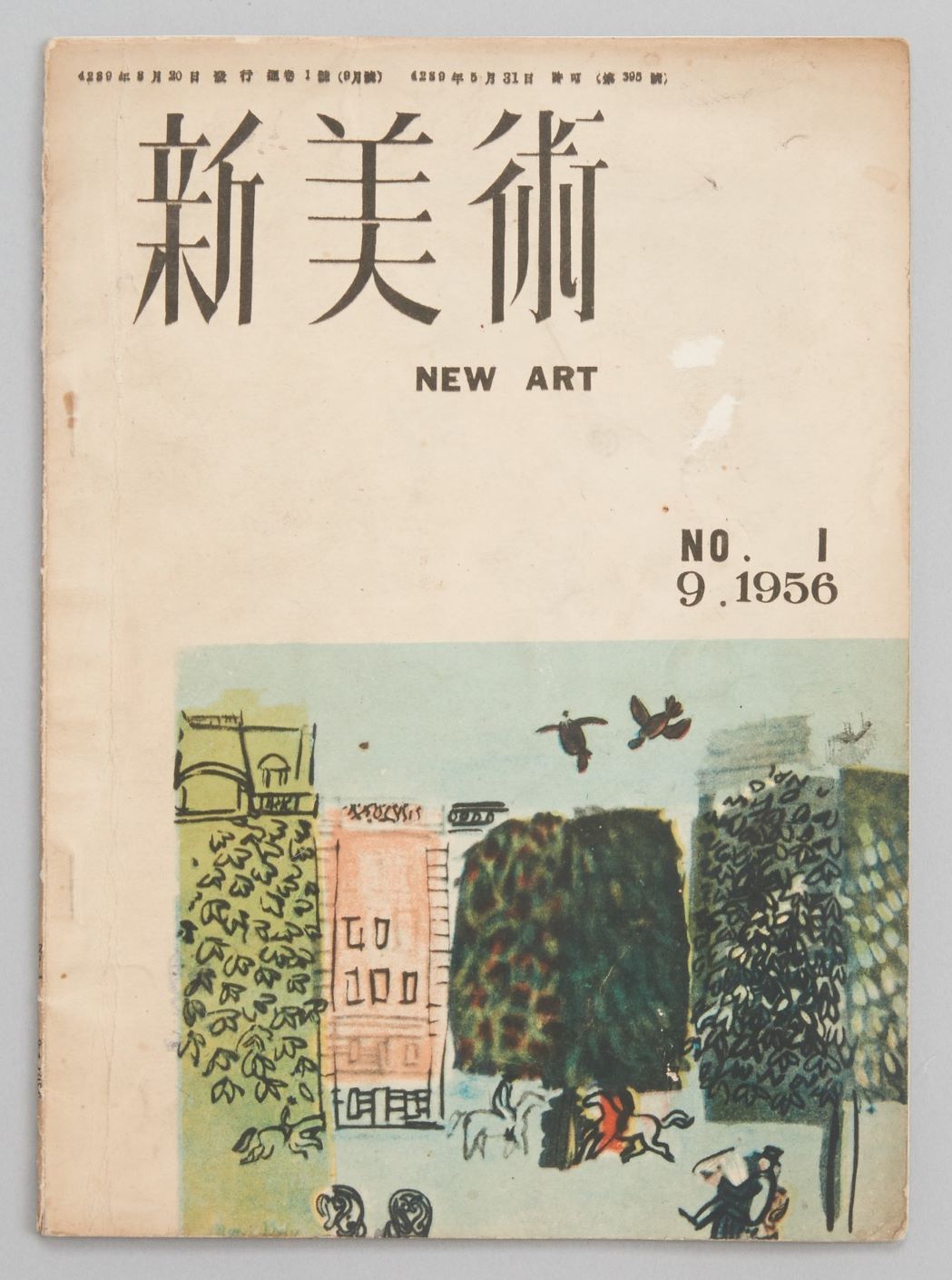
Sinmisul , no. 1, September 1956, Image provided by National Hangeul Museum
Sinmisul
* Source: Multilingual Glossary of Korean Art. Korea Arts Management Service
Related
-
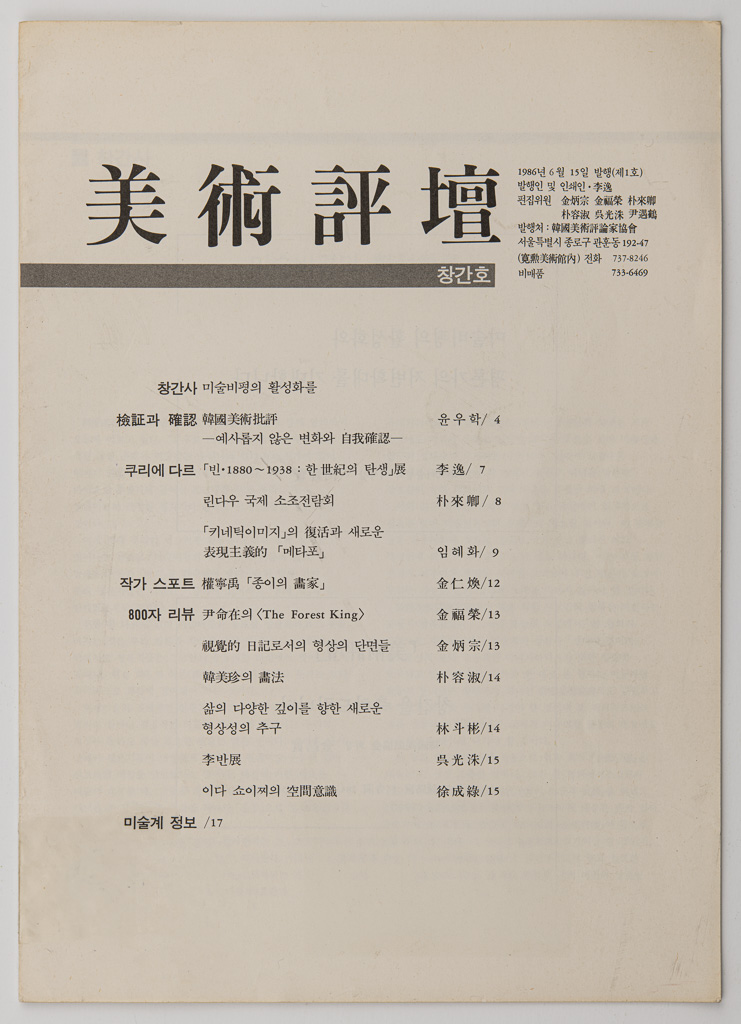
Korean Art Critics Association
Korean Art Critics Association is an organization founded by art critics in 1956. The founding members include; Choi Sunu, Lee Hangsung, Lee Kyungsung, Chung Kyu, Bang Geun-taek, Bae Gilgi, Chun Seung-bok, Kim Byungki, Kim Youngki, Kim Chung-up, and Kim Youngjoo. Lee Yil, a subsequent president of the group, established the quarterly art magazine Korean Journal of Art Criticism in 1986, and created the Korean Art Critics Association Award in 2009. Through this platform, the association continues to support artists and art writers.
-
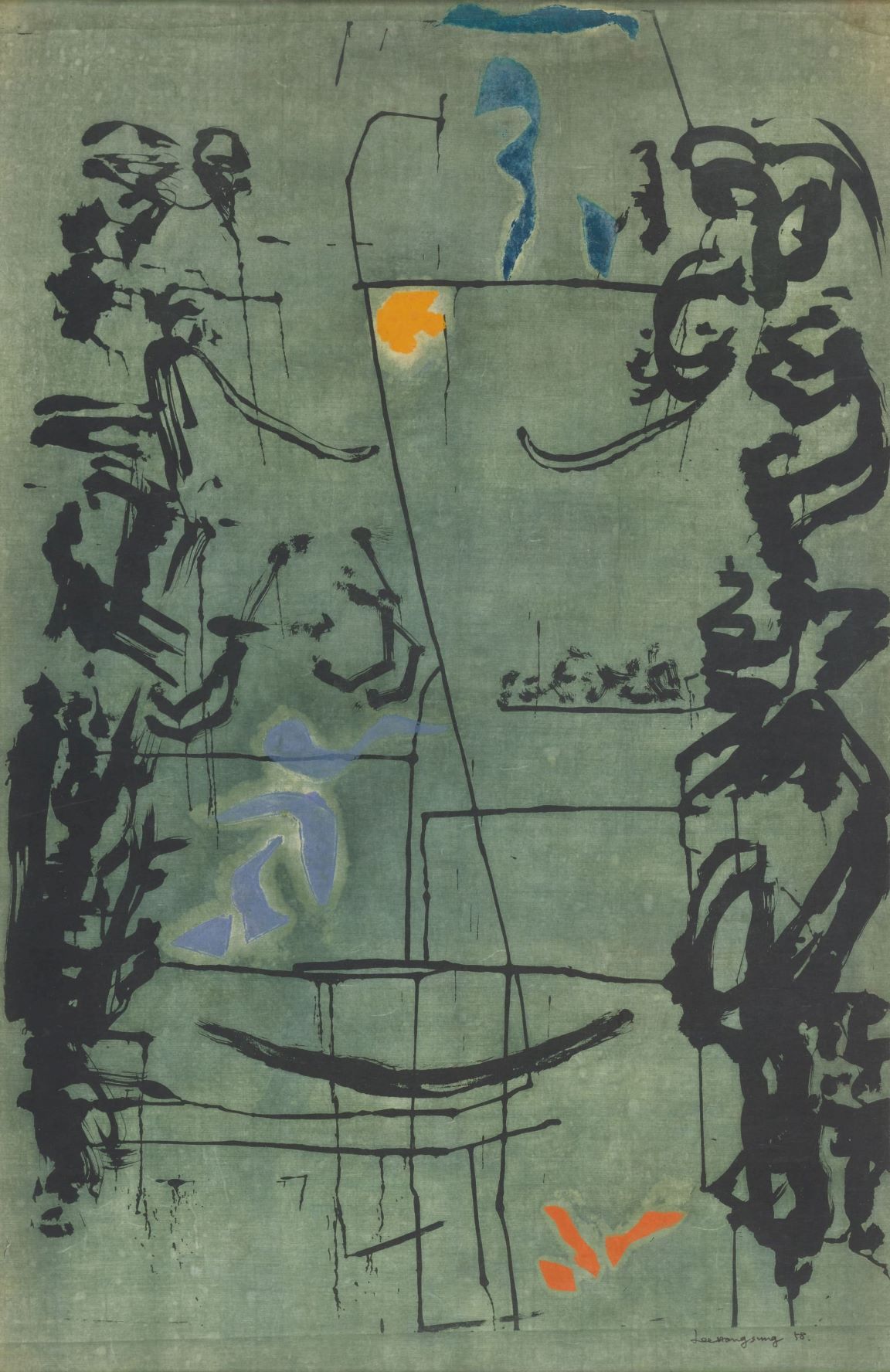
Lee Hangsung
Lee Hangsung (1919-1997) was a Western-style painter and printmaker who pioneered Korean contemporary printmaking and a leading publisher who promoted the publication and dissemination of art books. He learned painting from Kwon Jungrok, a Western-style painter active in Daejeon, and worked as a stage artist at Dongyang Theatre in Seoul. In 1945, he established a publishing company Munhwa Gyoyuksa and published art textbooks for elementary, middle, and high schools and art books such as Seoyang misulsa (History of Western art) and Segye misul jeonjip (Collection of world art). In 1956, he established another publishing company Sinmisulsa and published Sin Misul (New art), the first art magazine in Korea, thus exerting influence upon the formation of the culture of art criticism. Lee Hangsung led the founding of the Korea Prints Association [Hanguk panhwa hyeophoe] along with Yoo Kangyul, Chung Kyu, Choi Youngrim, and others. In 1958, Lee held the first solo exhibition of lithographs by a Korean artist. Winning an honorable mention for the lithograph Tender Heart of the Buddha at the fifth International Biennial of Contemporary Color Lithography held in 1959 at Cincinnati Art Museum in the U.S., he secured his place in the Korean art scene as a printmaker. Later, he produced print works using Joseon-era wooden blocks that were used for printing old books, letterheads, book covers, and those for imprinting patterns on rice cakes. In his later years, he continued to create works that revealed his Eastern spirituality by pictorializing Chinese characters, such as “念” (yeom, meaning idea), “情” (jeong, meaning affection), “思” (sa, meaning thought), and “心” (sim, meaning mind). Lee contributed to the development of art education by serving as president of the Korean Art Education Association [Daehan misul gyoyuk gyeophoe] and chairman of the Korean Committee of the International Society for Education [Gukje misul gyoyuk hyeophoe hanguk wiwonhoe].
Find More
-
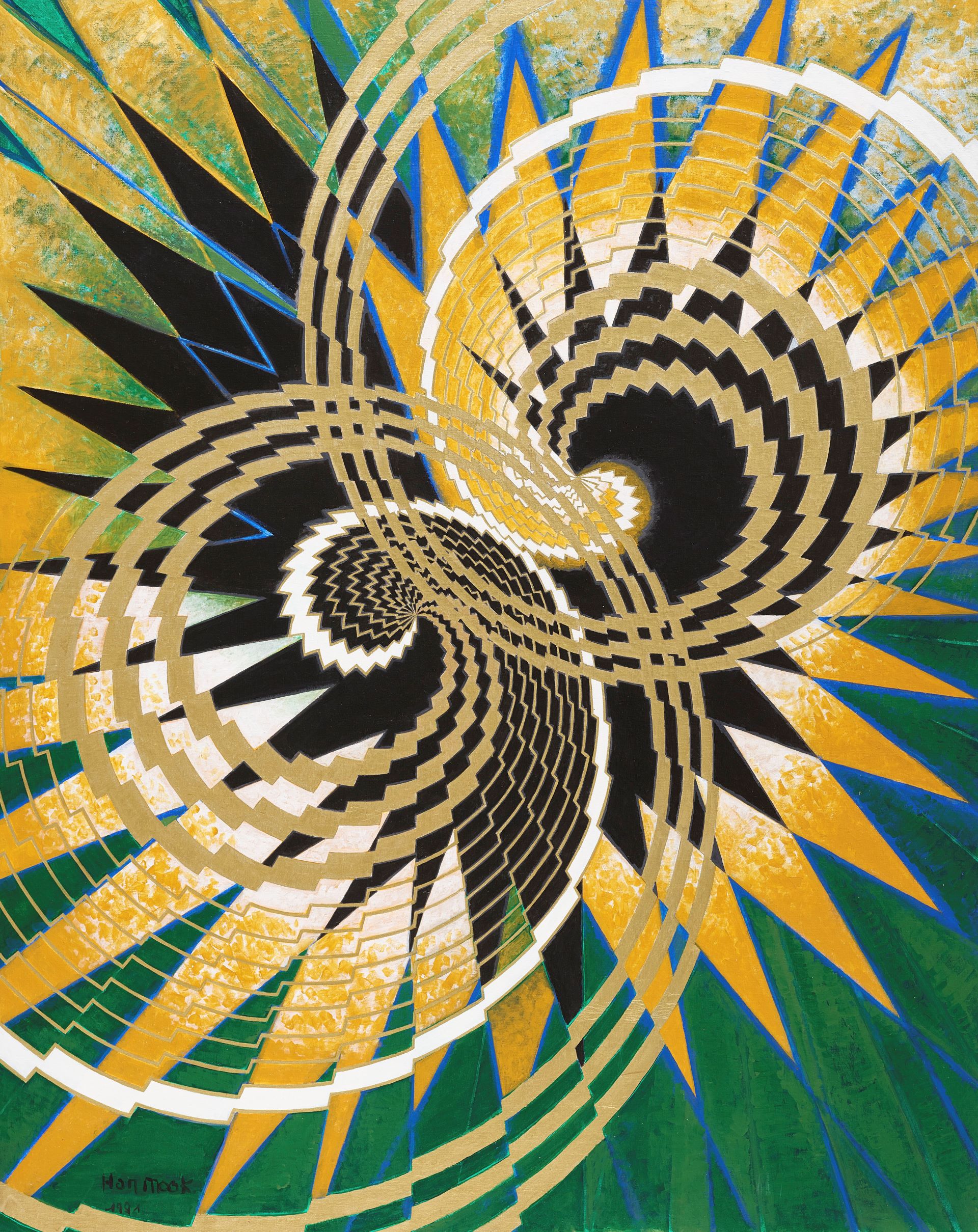
Han Mook
Han Mook (1914-2016, pen name Mook, real name Han Baekyu, Japanese name Momoda), was born in Seoul and moved to Manchuria in 1932. He studied painting at the Ogwahoe Art Research Institute in Dalian and started to create his own works. In 1935, he moved to Japan, and studied at Kawabata Art School. After he returned to Korea in 1944, he taught at Geumgang Middle and High Schools in Goseong. When the Korean War broke out, he fled to Busan in 1951 and returned to Seoul in 1953, where he taught at Osan Middle and High Schools. He taught as an art professor at Hongik University in 1955 and led the foundation of the Modern Art Association in 1957. To concentrate on his creative practice, he departed to Paris in 1961 and studied etching at Atelier 17 in 1971. He died in Paris in 2016. Mook explored the gradation from figuration to non-figuration, and during the 1960s, he created works based on pure vertical and horizontal compositions while also using collage techniques and strong matiere. In the 1970s, he created many etched and abstract geometric works in acrylic, that represented the interlocking time and space of the universe in concentric circles and radiation. Since the mid-1980s, narrative and formative elements began to dominate within his work as he investigated the theme of introspection. He also created calligraphy, drawing, and collage works on traditional Korean Hanji paper and cloth.
-
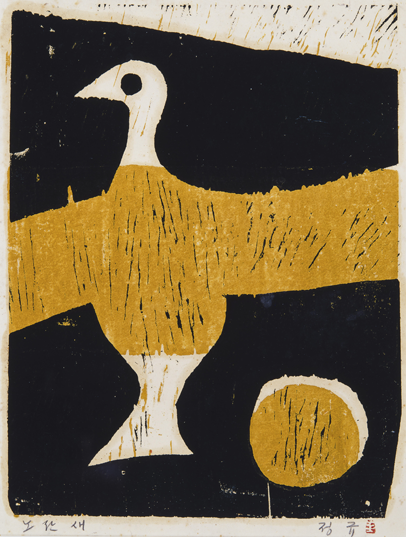
Chung Kyu
Chung Kyu (1923-1971) was born in Goseong, Gangwon-do. He graduated from Gyeonggi Public Commercial School in 1941 and moved to Japan to attend the Department of Western Painting at Teikoku Art School. He returned to Korea in 1944 and stayed in Busan during the Korean War, moving to Seoul to be a researcher at the Korean Visual Art Research Institute from 1954 to 1962. He studied prints and ceramics in Rochester, New York, USA on a one-year invitation from the Rockefeller Foundation. After he came back, he expanded his art from painting to prints and ceramics. He was a founding member of the Korea Art Critics Association in 1956, the Korea Prints Association [Hanguk panhwa hyeophoe] in 1958, and the Korean Art Critics Association in 1960. He established the Institute of Korean Traditional Ceramics Craft in 1960. He contributed his prints to the Contemporary Art Exhibit sponsored by Chosun Ilbo and created ceramic murals at Oyang Building and Namsan Liberty Center, leaving an important mark on the development of public art in Korea. He worked as an art lecturer at Ewha Woman’s University from 1955 to 1961, at the department of craft, Hongik University from 1960 to 1963, and as a professor of the Department of Ceramics at Kyung Hee University from 1963 to 1971.






